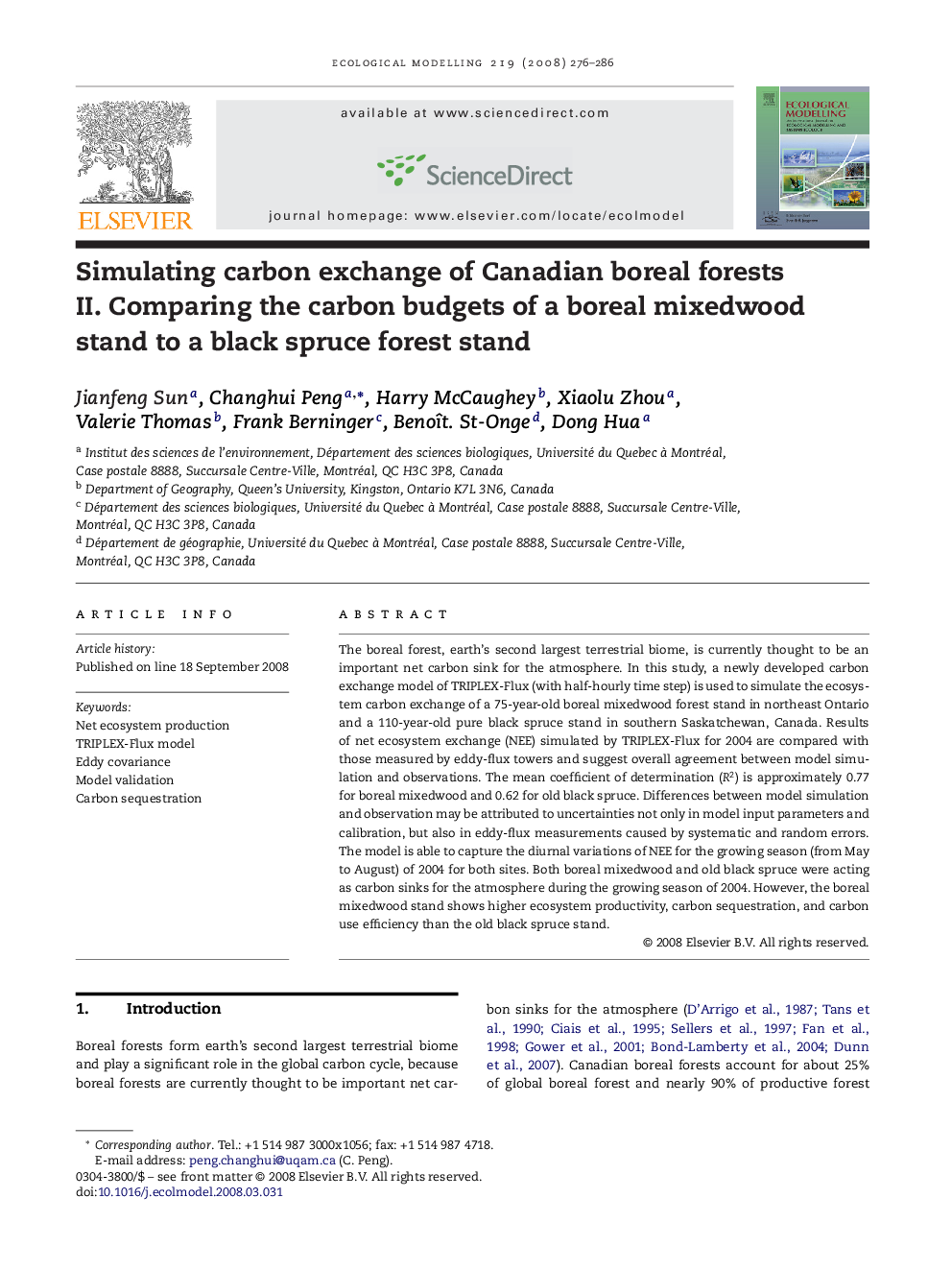| Article ID | Journal | Published Year | Pages | File Type |
|---|---|---|---|---|
| 4377922 | Ecological Modelling | 2008 | 11 Pages |
Abstract
The boreal forest, earth's second largest terrestrial biome, is currently thought to be an important net carbon sink for the atmosphere. In this study, a newly developed carbon exchange model of TRIPLEX-Flux (with half-hourly time step) is used to simulate the ecosystem carbon exchange of a 75-year-old boreal mixedwood forest stand in northeast Ontario and a 110-year-old pure black spruce stand in southern Saskatchewan, Canada. Results of net ecosystem exchange (NEE) simulated by TRIPLEX-Flux for 2004 are compared with those measured by eddy-flux towers and suggest overall agreement between model simulation and observations. The mean coefficient of determination (R2) is approximately 0.77 for boreal mixedwood and 0.62 for old black spruce. Differences between model simulation and observation may be attributed to uncertainties not only in model input parameters and calibration, but also in eddy-flux measurements caused by systematic and random errors. The model is able to capture the diurnal variations of NEE for the growing season (from May to August) of 2004 for both sites. Both boreal mixedwood and old black spruce were acting as carbon sinks for the atmosphere during the growing season of 2004. However, the boreal mixedwood stand shows higher ecosystem productivity, carbon sequestration, and carbon use efficiency than the old black spruce stand.
Related Topics
Life Sciences
Agricultural and Biological Sciences
Ecology, Evolution, Behavior and Systematics
Authors
Jianfeng Sun, Changhui Peng, Harry McCaughey, Xiaolu Zhou, Valerie Thomas, Frank Berninger, Benoît. St-Onge, Dong Hua,
